Inside Tracks #9: Tandyn Almer "Along Comes Mary" + The Association, R. Stevie Moore, Manhattan Transfer, 24-7 Spyz
Tandyn Almer's classic psych-pop treasure has seen a multitude of covers over the decades. Along with The Association's hit template, we dug up 3 wildly different covers!
He was only in the public eye (and reluctantly, at that) for about a decade…roughly 1965 through the mid-’70s. Therefore, very few photos were taken of him, and I’ve seen about all of them, now.
No one photo captures the childlike persona of the young man blessed with a maddeningly limitless and sophisticated musical talent who had no idea how to harness it, with no ambition to pursue it even if he did…except this one.
FR&B did a Tandyn Almer retrospective recently, which can be accessed here:
1. Tandyn Almer/Curt Boettcher, “Along Comes Mary” Demo 1965/66
Association lead singer, Jim Yester, spoke with ClassicBands.com’s Gary James: “Some guys would do demo sessions for other people. Play on them, sing on them. Jules [Alexander, The Association’s original guitarist/vocalist] was doing a demo session one night with Curt Boettcher and Tandyn Almer; I forget what the company is, the publishing company.” [Davon Music]
According to rock historian, Domenic Priore, in his book, Riot on Sunset Strip, “Some of Almer's compositions were sung [on demos] by a teenage unknown named Linda Ronstadt.”
Returning to Yester in his interview with Gary James: “Jules came home that night, four of us lived together at the place we rehearsed over in West L.A., and he played on the demo for the song ‘Along Comes Mary.’ He brought home an acetate and said, ‘Hey, listen to this!’ [Editor’s note: An acetate is pictured and explained here.]
“We started working on it the next day, and that was our first national hit, but it took awhile. We did it on stage for about seven or eight months before we recorded it. So, it was pretty solid and the guy who was our producer at the time [Boettcher] had been to probably twenty or thirty of our shows at least, and he had a pretty good idea of where it would go. That always helps.”
2. The Association, “Along Comes Mary,” 1966, Valiant Records

“We had to convince our label at the time, Valiant Records, to let a friend of ours, Curt Boettcher, produce [‘Along Comes Mary’] for us,” Yester told MusicExistence.com in 2019. The single peaked at #7 on the Billboard Hot 100 in the spring of 1966.
“They finally agreed and would also allow him to produce our first album [1966’s And Then Along Comes…The Association]. The album included ‘Along Comes Mary’ and ‘Cherish,’ so that was a good start. ‘Along Comes Mary’ was written by another friend of ours, Tandyn Almer. He was a real wordsmith, and the lyrics are incredible. If and when I get the chance to simply perform the song as a reading, it blows people away!”
After the song became a hit for the tiny Valiant Records, Warner Bros. actually bought the label in March 1967 for more than $1 million - at the time, a rather staggering sum - mostly just to acquire The Association’s contract.
Later that year, after only seven album releases under the Warner Bros. banner, Valiant Records folded up its corporate tent, and was simply absorbed into the Warner Bros. roster (including The Association). Valiant’s vinyl output remains desirable to collectors today.
3. R. Stevie Moore, “Along Comes Mary,” 1986, New Rose Records (France)
He’s been called a lot of things by a lot of people: The Godfather of DIY, The Maestro of Lo-Fi, and The King of Cassettes in what some call the “cassette culture,” a phrase, that merely by existing, confirms that such a thing exists, despite where logic (and retail sales figures) might land.
Will Schube, of Passion of the Weiss, took a stab at a Moore mini-bio in 2015: “He’s a Nashville-born, New Jersey-residing pop musician with the discography of 50 Guided By Voices. That’s not to equate quality with quantity, but the sheer work ethic of such a collection is inspiring and, quite frankly, maniacal.”
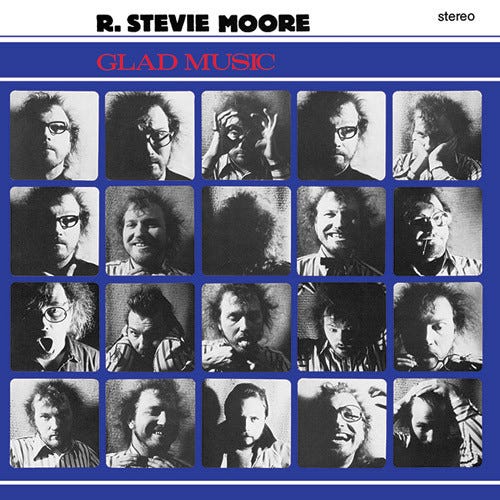
A man who’s reportedly self-released over 400 albums since 1968, “Moore’s a one man operation who handles and oversees every aspect of the music process from recording to mailing his records.”
Apparently a multi-instrumentalist, Moore, 70, might actually be all over this more-than-proficient 1986 cover, and his respect for the song is clear and unmistakable. What’s missing in arrangement originality is more than eclipsed by the impressive effort and ultimate triumph of execution.
4. The Manhattan Transfer, “Along Comes Mary,” 1995, Atlantic Records

With The Association’s hallmark harmonies, it was inevitable that The Manhattan Transfer, at some point, would lay down a Lambert, Hendricks & Ross-ian jazzercise on Tandyn’s gem. They included it on their 1995 album (their 16th studio disc) for Atlantic Records, Tonin.’ It’s a collection of covers that includes Tandyn’s good friend, Brian Wilson’s (and songwriter and ad copywriter, Tony Asher’s) “God Only Knows”.
The Grammy-winning Transfer (Cheryl Bentyne, Alan Paul, Janis Siegel, and Tim Hauser at the time) have recorded and entertained audiences for half a century, now.
Hauser and Paul share lead vocals throughout the song, with Hauser crafting the vocal arrangements. Longtime Atlantic Records Veep (and Tonin’ producer), Arif Mardin, also chipped in on vocal arrangements, as did Corey Allen.
Robbie Buchanan played keyboards on the track, just as he did on sessions for FR&B’s Stephen Michael Schwartz 20 years earlier:
Stephen Michael Schwartz Plans 1975 Tour; Enter David Foster-EXCLUSIVE INTERVIEW PT. 3
5. 24-7 Spyz, “Along Comes Mary,” 1996, Enemy Records (Europe)
In March 1996, six months before the release of Heavy Metal Soul by the Pound (on What Are Records?) in the States, the Enemy label released an alternate European version of the album entitled, 6. It’s only on the EU-issued 6 album that Tandyn’s song appears.
This was actually their fifth album release, but I imagine they’re including a 1991 EP, This is 24-7 Spyz, in their curious album number sequencing.
Originally a South Bronx quartet formed in 1986, this was actually the band’s first album as a trio, as they decided not to replace departed lead singer, Peter Fluid; instead, guitarist Jimi Hazel, took up the bulk of the singing chores. Rick Skatore on bass and Joel Maitoza on drums round out the trio.
“I’m glad Living Colour did what they did because it’s been quite a long time since there’s been any black band that’s stepped out of the R&B mode and established something,” Hazel said during an interview with noted L.A. Times rock scribe, Richard Cromelin, at a Hollywood publicist’s office in June 1989.
“The only reason I get a little bit strange about it is because I don’t see the similarities between us, beyond being four black guys not playing R&B; Living Colour to me isn’t a rock band. Living Colour is a pop band with an edge. Very catchy, hooky, very politically motivated. We come in on more of a street-wise, hardcore thrash or metallic edge, a rougher edge,” Hazel concluded.
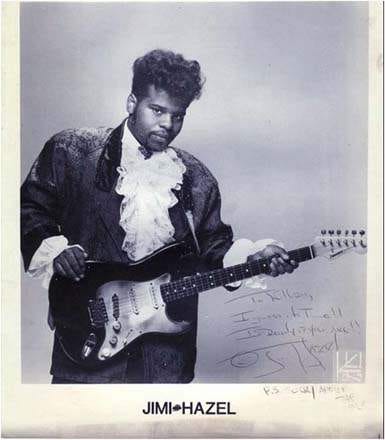
It’s that rougher, metallic edge that emerges quite clearly in their run at “Along Comes Mary.” But, heavy-handed they’re not, as this is a turn that could’ve derailed really easily, thrashing poor “Mary” into smithereens.
Instead, it’s a deftly-played, jaunty romp that proves what a malleable ole gal “Mary” is as a composition. Hazel and his Spyz can take a bow for succeeding in providing their head-bangin’ fan base with a brand new metallic thrash that--in its original form as heard by their grandmas--they wouldn’t be caught dead near.
And, kudos to the Spyz for supplanting 3- and 4-part harmonies with a couple of clever and creative vocal swings in the verses!




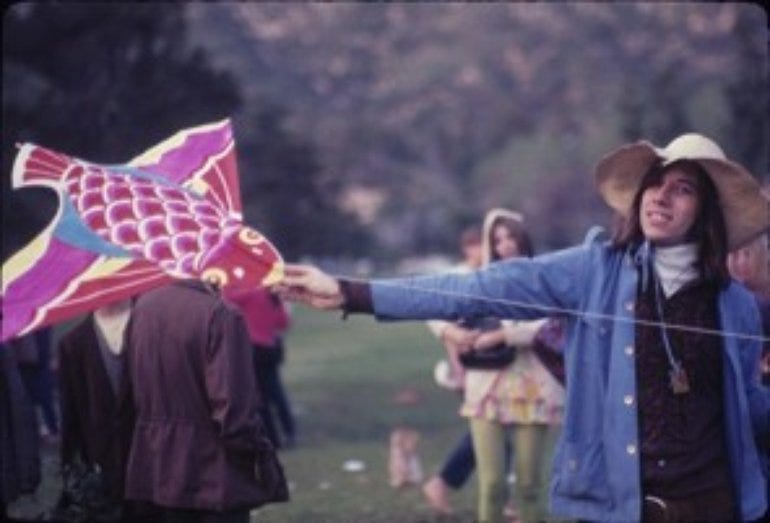

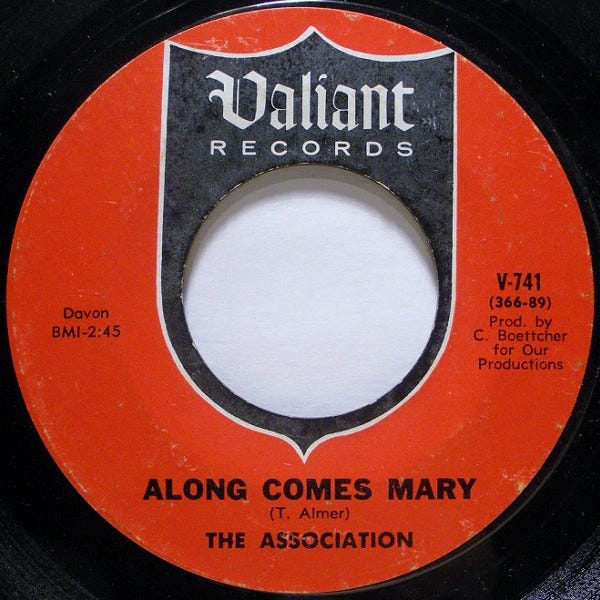



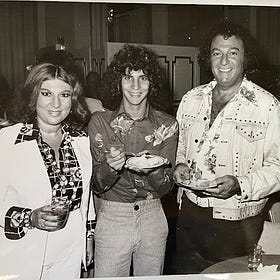

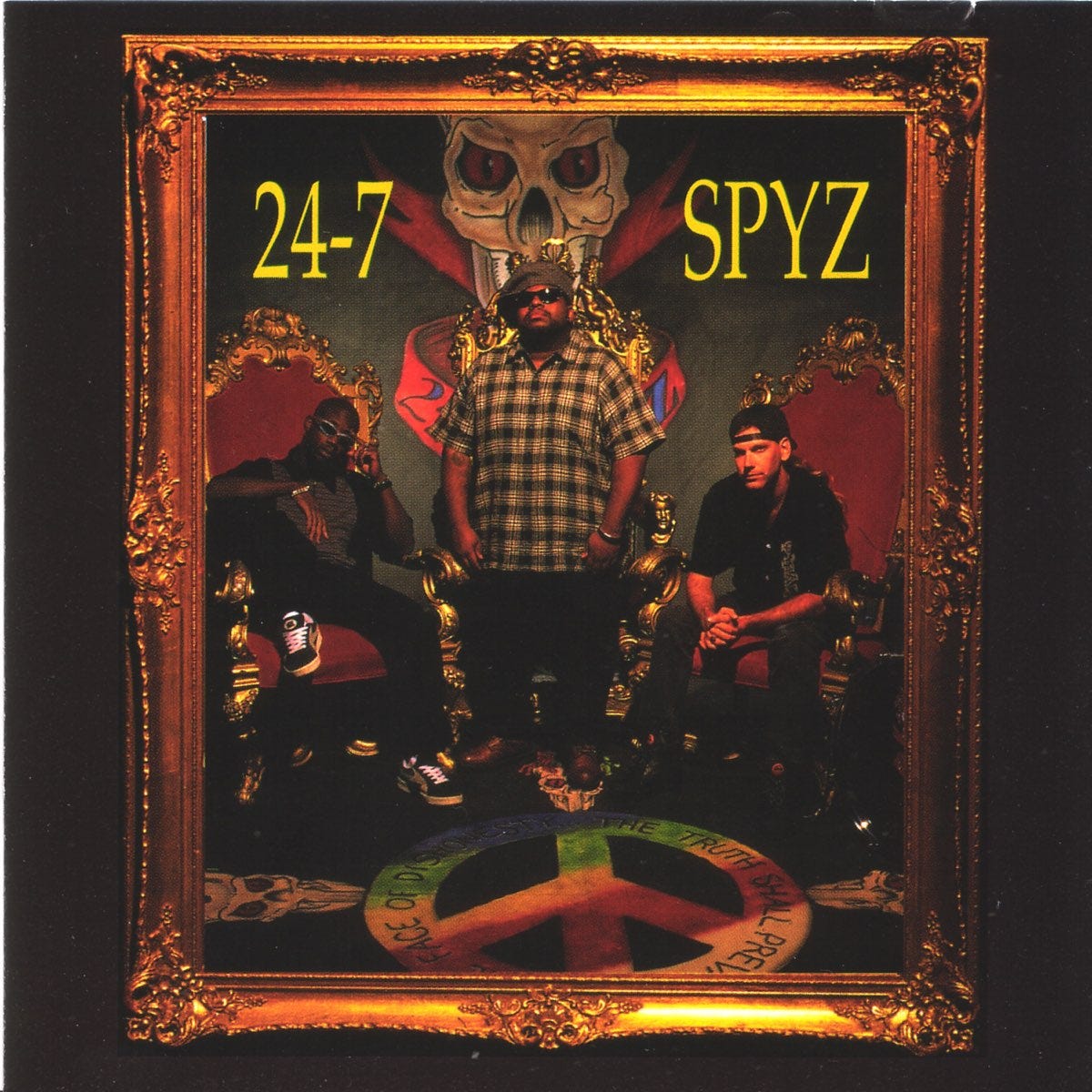


Interestingly (or not) I saw 24-7 Spyz at a show in Portland. '90? '91? It was a rescheduled date, and if memory serves, there were maybe 25 people there. The still put on a great show, though.
You were right Brad, I was sold at, "he wrote songs with Brian Wilson"! Having enjoyed 'Along Comes Mary', I tried Tandyn Almer (who I'd never heard of)'s one album on Spotify, and there are some more pop gems on there, I particularly like 'About Where Love Is'.
This has just made me more determined though to reciprocally introduce you to some of the more obscure stuff I love, by getting you to sign up to my music themed novel at challenge69.substack.com As a sampler here's a 'Lost Singles '78 to '81' playlist I pulled together for the latest chapter, enjoy!
https://open.spotify.com/playlist/0OWZTX0WnC9WP50IQ3Tmmn?si=18232bd259634d17